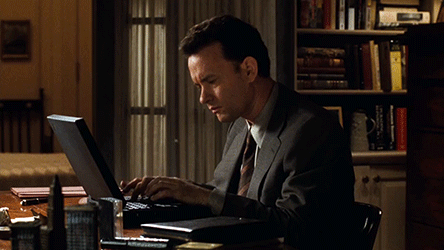Email, the Micro-Meetings Eating Our Days – 500ish Words

And our time. And our lives…
There are two things at work that everyone seems to universally hate: email and meetings. And I think the hatred stems from the same basic reason: they’re both black holes in which time enters and never returns. Sometimes such a use of time is worthwhile and necessary. But far too many emails and meetings are quagmires that distract us all from doing actual work.
Everyone knows I hate email. These days, I try to limit the amount I write about such hatred to once a year. It’s about that time…
It occurred to me recently that email and meetings are actually even more similar than the parallel above. Emails are basically little meetings that you get sucked into throughout a day. Some of them may take just a few seconds, others take far longer. Some may even take days or weeks.¹
I came to this conclusion recently while using the latest version of Gmail, which was released last week. One key new feature is a sidebar that includes other Google apps, such as a particularly useful new one called Tasks. Basically, you can drag any email from your inbox into a task list, to deal with later. It’s both amazing and awful.
It’s amazing because it clears out your inbox. For a long time — since the Mailbox days — I have been a big user of the “snooze” functionality for email (also included in the new Gmail). The problem is that I abuse it. I’m constantly snoozing emails over and over and over again, promising myself I’ll deal with them later. Sometimes that happens. Sometimes it does not…
Okay, often it does not. And as such, a growing list of emails keep boomeranging back to me day in and day out. It’s both additional cognitive load (“what was this again?”) and stress (“ugh, I still have to deal with this”). Another mini-meeting that day, as it were. With the new Tasks area, it’s shoving stuff in a drawer to deal with when there’s time.
[Narrator: there’s never time.]
This new area also reinforces the notion that our inboxes are really just to-do lists. This concept is nothing new. But just how much of my inbox falls into this category was a revelation to me, thanks to Tasks. At any given moment, upwards of 50 to 75 percent of the email in my inbox (beyond the spammy stuff or newsletters) are actually to-dos from other people.
Let that sink in for a second. On a singular basis, each of these asks is reasonable and I’m happy to help with. But in aggregate, this is a nightmare. There’s no way anyone could manage such a system without spending the vast majority of their day doing email. Such is the world in which we live.²
But because I can now easily shove these emails into the drawer that is Tasks, at least they’re no longer a recurring meeting I have to deal with over and over again, day after day. Sure, you could have used folders in an email client in this way in the past — and I did at various points — but even just the name and design of Tasks drives this situation home.
This points to what I believe is the inevitable outcome for email — that we just stop paying attention to it. This sounds extreme, I know. But given the above, there is ultimately no solution, just hacks. Some hacks have been clever (snoozing) others have been more blunt-force (auto-replies). At the end of the day, these are all just Band-Aids trying to hold together the Hoover Dam.
It will rupture and we’ll all drown. We should probably be spending our time building an ark. But we have no time to do so because we’re busy doing email. When we’re not in meetings, that is.
Note: this post was adapted from my newsletter last week.
¹ To think about, take action on, and respond to.
² And this is where I’ll get pushback that yes, I’m undoubtedly an extreme example given my current line of work (VC) and my previous line of work (reporter). But I truly believe (and have witnessed) that this is becoming a bigger problem for everyone, over time. Because the amount of email is ever-increasing. My issue today will be your’s tomorrow (and mine will be worse by then, and so on and so on…).
